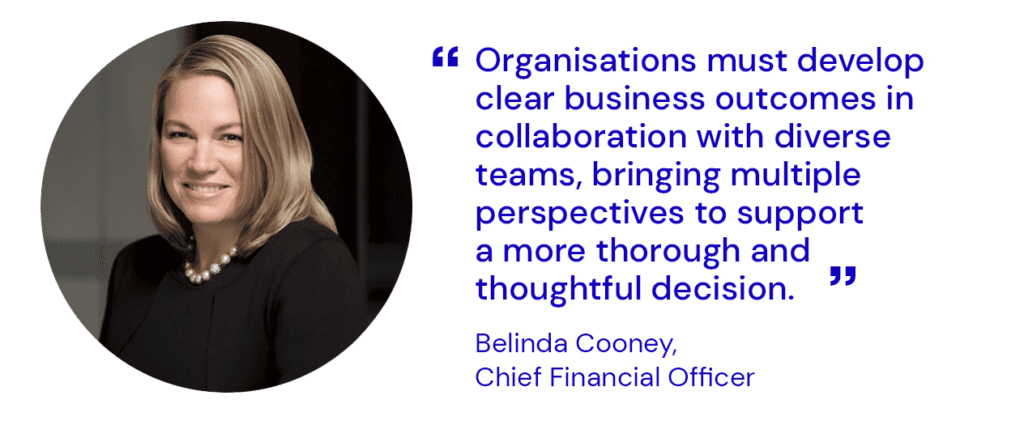A CFO’s top 3 tips for unlocking the business value of cloud
With the growing cost of cloud, organisations are still struggling to see the value.
Adoption, migration, optimisation, security and management services designed to deliver business agility.
Improve your security posture with tailored strategies and front-line defence services.
Scalable colocation and connectivity within a hyper secure environment.
Disaster recovery and serviced offices in secure, premium office facilities.
Tailored end-to-end solutions for your hardware ecosystem across the widest range of vendors.
Seamless management of your IT environment, underpinned by world-class cyber security, no matter where you are on your journey.
Securely and effectively operate, monitor and maintain your network.
Enjoy the comfort of a modern working space supported by world class technology, security and resilience.
Help your clients take control of their IT environment with Australia and New Zealand’s leading hardware maintenance provider.
Interactive Anywhere provides robust infrastructure solutions designed to support the seamless operation of digital environments. These solutions include scalable cloud services, reliable data storage, and efficient server management, ensuring optimal performance and uptime.
The network solutions from Interactive Anywhere encompass comprehensive design, implementation, and maintenance of secure and efficient networks. By optimising connectivity and bandwidth, these solutions facilitate seamless communication and data transfer, enhancing overall productivity and operational efficiency.
Interactive Anywhere offers dedicated end user support services that ensure users receive prompt assistance with technical issues. This includes help desk support, troubleshooting, and training, aimed at improving user experience and minimising downtime for businesses.
With a focus on safeguarding digital assets, Interactive Anywhere's cyber security solutions provide advanced protection against cyber threats. These solutions include threat detection, risk management, and compliance services, ensuring businesses can operate securely and with confidence.
Interactive offers financial institutions with secure operations, robust cyber security, seamless connectivity, end-user support, and cloud solutions, ensuring long-term resilience.
For manufacturing, precision and efficiency are paramount. Our solutions optimise operations, streamline processes, and ensure seamless connectivity to drive productivity and innovation.
In professional services, reliability and agility are crucial. Our solutions enhance efficiency, streamline workflows, and provide seamless connectivity, empowering firms to deliver exceptional client experiences and stay ahead in a dynamic market.
In aged care, precision and patient well-being are fundamental. Our solutions enhance operational efficiency, streamline workflows, and guarantee secure, seamless connectivity, empowering providers to deliver exceptional care and lead in an ever-evolving sector.
We're Australia's leading IT service provider and we keep technology human.
News & insights from our experts to help you drive performance and grow your business.

Organisations are growing frustrated. Cloud costs are soaring while value appears to remain elusive. While recognising the need to optimise their cloud deployment, organisations can’t seem to find a solution – they’ve fallen down the rabbit hole with no clear way out.
As Gartner’s Lydia Leong writes: “Unnecessarily high cloud costs are the result of business decisions about priorities—specifically, about the time that developers and engineers devote to cost optimization versus other priorities”.
Chief Financial Officers (CFOs) have emerged as catalysts for discovering business value in the cloud, offering a strategic perspective on sector-shaping trends and a deep understanding of the economics behind a company’s business model. With most organisations achieving less than one-third of the impact expected from their cloud investments, the CFO is ideally positioned to apply an enterprise lens to align the priorities of IT, line managers, and the C-Suite.
Here are a few ways organisations can navigate cloud complexity to discover the unlimited opportunities waiting at the bottom of the rabbit hole.

There’s a classic scene in Alice in Wonderland, where Alice meets the Cheshire Cat at a fork in the road and asks, “Would you tell me, please, which way I ought to go from here?”. The Cheshire Cat replies, “That depends a good deal on where you want to go”. This same wisdom applies to the cloud – know where you’re going and why. Organisations often recognise the need to digitally transform, but don’t know what they want to achieve by doing so. Moreover, Gartner, Inc., estimates that less than one-third of enterprises have a documented cloud strategy.
Organisations must develop clear business outcomes in collaboration with diverse teams, bringing multiple perspectives to support a more thorough and thoughtful decision. Focusing on these outcomes will help in directing (and redirecting) you the right way. A lack of collaboration and transparency will lead teams astray, resulting in outcomes that might be right for IT operations, but wrong for the business. Everyone has a part to play and establishing a cloud strategy with clear outcomes will guide organisations towards discovering business value.
Reframe what value means for your organisation. It’s common for organisations to define the success of their cloud investment in terms of predetermined ROI or the cost of technology. Leaders often get caught up with the promise of lower costs, overlooking the business drivers of their cloud spend. It’s important to align IT costs to both the business opportunities they enable and the risks they mitigate. Rather than viewing these investments as the price of installing a set of technologies, consider cloud services from an outcome perspective. Focusing on the outcomes means stakeholders will better understand IT’s value when linked to the capabilities it delivers and the risks it mitigates.
By focusing on value, organisations can understand how best to allocate scarce resources.
According to Mckinsey, the most significant benefits accrue to the business from faster time-to-market, simplified innovation, easier scalability and reduced risk – all of which would generate a greater incremental contribution than IT cost reductions. For example, value may be defined by the way cloud platforms can enable new digital customer experiences to be deployed within days rather than months. In other words, the cloud can offer a foundation of platforms and products to speed up innovation, enabling increased experimentation with new ideas at a lower cost.
Adopt an agile approach and encourage experimentation. Just as business never stands still, neither should your priorities. While many digital transformations splutter before taking effect, there’s every opportunity for organisations to learn, pivot, and recover lost momentum. Unknowns are inevitable – every time you pull up another floorboard, there always seems to be something unexpected beneath it. Having the ability to adapt quickly means people and funds can be re-allocated efficiently when there is a need to pivot.
McKinsey suggests organisations apply a “fail fast” mentality, to become better at both spotting emerging opportunities and cutting their losses in obsolescent ones.
Regularly reassessing investments creates opportunities for work to be redirected to value-add activities.
When it comes to tracking, forecasting and optimising cloud investments, changes to the interpretation of AASB138 have meant that many costs related to digital transformation previously accounted for as capex are now classified as opex, causing material impacts to profitability for many organisations. While it can be confronting to see the cost of IT and its impact on profit and loss, this shift has influenced many organisations to place greater focus on prioritisation and developing clearer objectives.
Taking the clear-headed logic of the Cheshire Cat, focusing on specific outcomes will assist organisations to deliver clear measurable value from cloud investments – through both profitability upside and mitigation of risks.